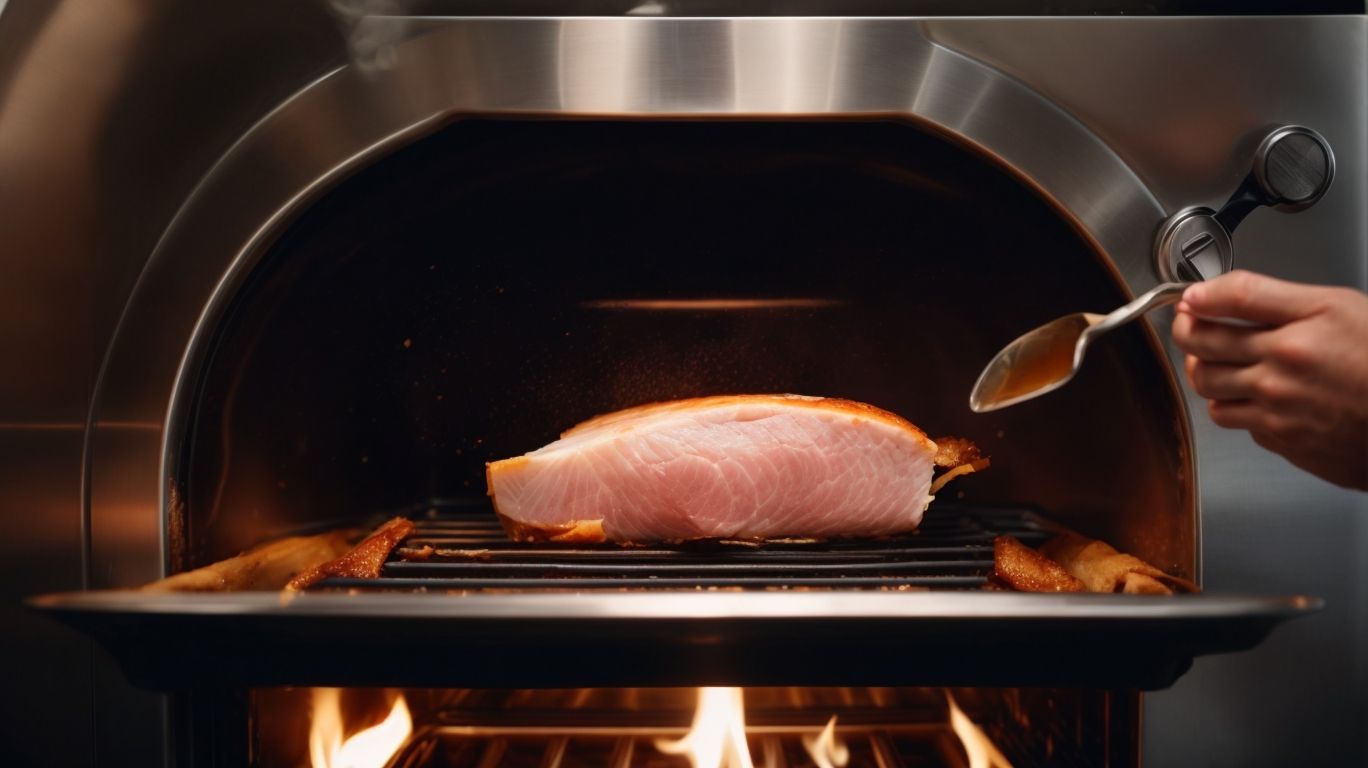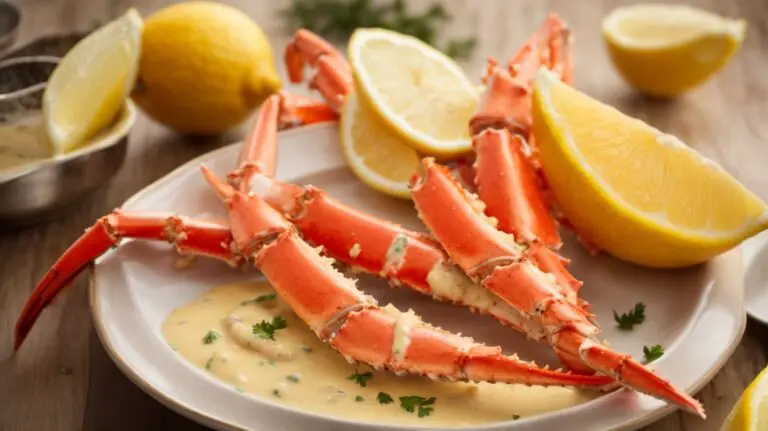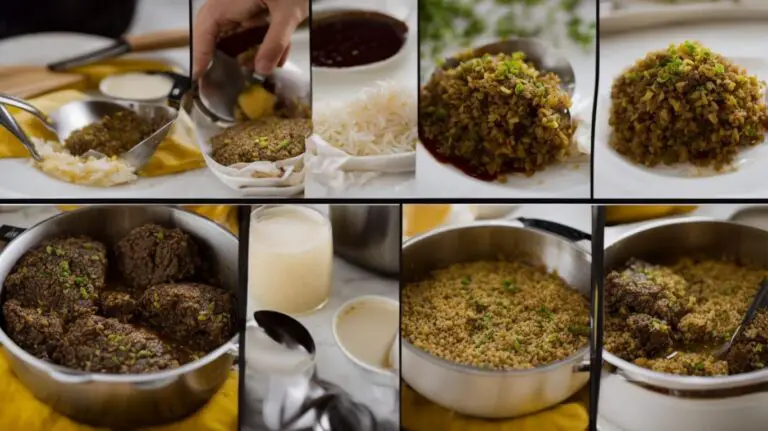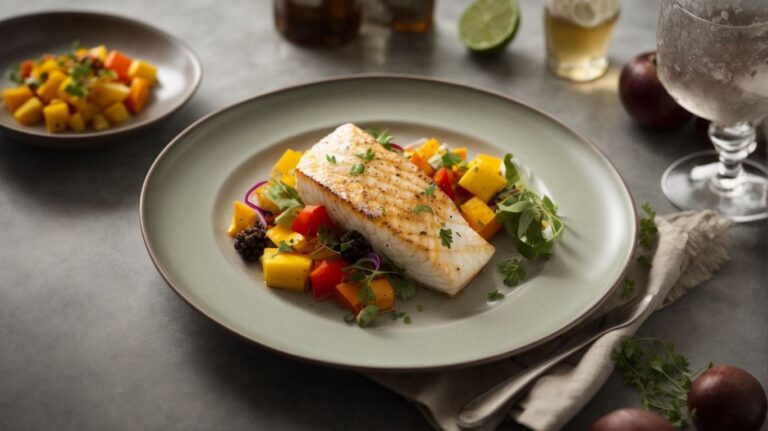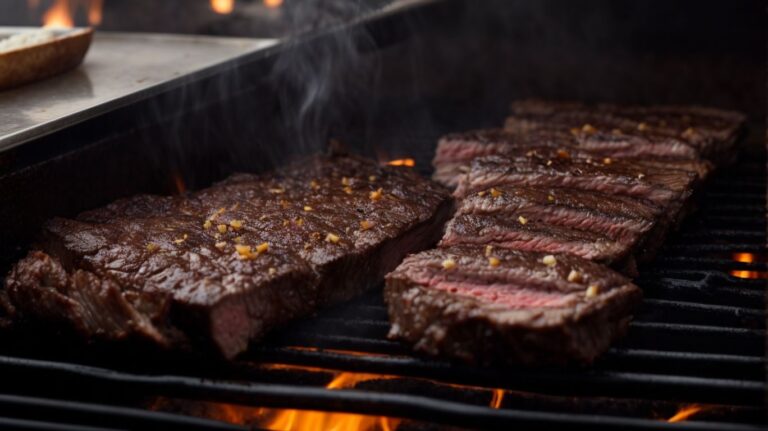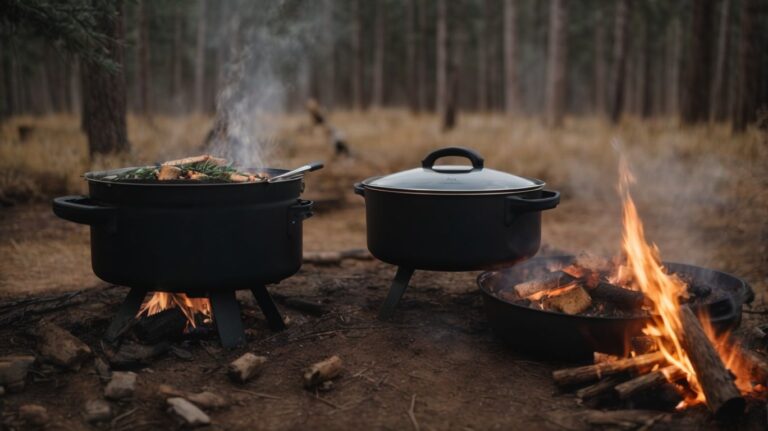How to Cook a Gammon Joint in the Oven After Boiling?
Are you looking to elevate your cooking skills and impress your guests with a delicious and succulent dish? Look no further than the humble gammon joint.
In this article, we will explore what exactly a gammon joint is, the different cuts available, and why it’s essential to boil it before cooking it in the oven.
We will provide you with a step-by-step guide on how to boil and cook a gammon joint in the oven, as well as some tips for achieving the perfect result.
So, let’s get cooking and dive into the world of gammon joints!
Key Takeaways:
What Is a Gammon Joint?
A Gammon Joint is a versatile cut of meat that originates from the hind legs of a pig, prized for its rich flavor and succulent texture.
Gammon Joints are known for their ability to absorb flavors, making them ideal for marinating and glazing. Whether you prefer a sweet honey glaze, a tangy mustard coating, or a spicy rub, these joints can accommodate a variety of tastes.
In terms of cooking, gammon joints can be boiled, roasted, or even barbecued to perfection. The meat’s natural tenderness lends itself well to slow cooking methods, allowing it to become wonderfully tender and juicy.
What Are the Different Cuts of Gammon Joint?
The world of Gammon Joints offers a diverse selection of cuts, including smoked, unsmoked, and honey-glazed varieties, each contributing unique tastes and textures to culinary creations.
Smoked Gammon Joints are typically prepared using a traditional smoking technique that infuses the meat with a rich, smoky flavor. This variety pairs well with robust ingredients like mustard, cloves, and brown sugar in the glazing process, creating a savory-sweet harmony.
On the other hand, unsmoked Gammon Joints provide a more subtle flavor profile, making them versatile for various seasoning options. When cooked, these joints tend to be more tender and retain their natural juiciness.
Honey-glazed Gammon Joints offer a delectable sweetness that caramelizes beautifully when cooked. The sticky glaze enhances the succulence of the meat, delivering a delightful balance of flavors.
Why Should You Boil a Gammon Joint Before Cooking It in the Oven?
Pre-boiling a Gammon Joint before oven preparation is essential to ensure tenderness, reduce saltiness, and infuse the meat with additional flavors, resulting in a delectable dining experience.
When you pre-boil a Gammon Joint, you kickstart the cooking process, allowing the meat to begin tenderizing even before it hits the oven. This method is particularly beneficial for larger cuts of meat, ensuring that the center is cooked evenly by the time the outer layers achieve that beautiful golden crust.
Pre-boiling helps to remove excess salt from the joint, especially if it has been cured or brined, resulting in a more balanced flavor profile that won’t overwhelm the taste buds. By parboiling the gammon, you can control the salt levels better, making it more palatable for a wider range of preferences.
This initial cooking step serves as a fantastic opportunity to infuse the meat with aromatics and seasonings of your choice. Whether you opt for classic additions like bay leaves, peppercorns, and cloves, or decide to go bold with exotic spices and herbs, the pre-boiling process ensures that these flavors penetrate deep into the fibers of the meat, creating a harmonious blend that enhances the overall taste.
How to Boil a Gammon Joint
Boiling a Gammon Joint requires meticulous attention to detail, essential ingredients like bay leaves and peppercorns, and a suitable cooking vessel such as a large pot or pressure cooker.
What Ingredients Do You Need?
To boil a Gammon Joint to perfection, gather essentials like the joint itself, water for boiling, aromatic additions like cloves or juniper berries, and optional glazing ingredients for flavor enhancement.
Choosing a high-quality Gammon Joint is crucial for a delicious end result. The meat should be well-marbled and not too lean to ensure juiciness. In terms of water, opt for a good stock or broth instead of plain water to imbue the meat with extra richness.
Experiment with seasonings like bay leaves, peppercorns, and a touch of brown sugar to enhance flavor during the boiling process. Strategic infusions can make a remarkable difference in the final taste and aroma of the gammon.
Step-by-Step Guide to Boiling a Gammon Joint
Embark on the culinary journey of boiling a Gammon Joint by seasoning the water, gently simmering the joint with aromatic accompaniments, and ensuring thorough cooking until it reaches desired tenderness.
When preparing to boil a Gammon Joint, it’s crucial to start with a large pot filled with enough water to fully submerge the joint. The water should be seasoned generously with salt for flavor infusion. Add in bay leaves, peppercorns, cloves, or any other herbs and spices to enhance the taste profile. Once the water is seasoned, gently lower the joint into the pot and bring it to a gentle simmer. Patience is key here; allow the joint to cook slowly to ensure it remains tender and juicy.
How to Cook a Gammon Joint in the Oven After Boiling
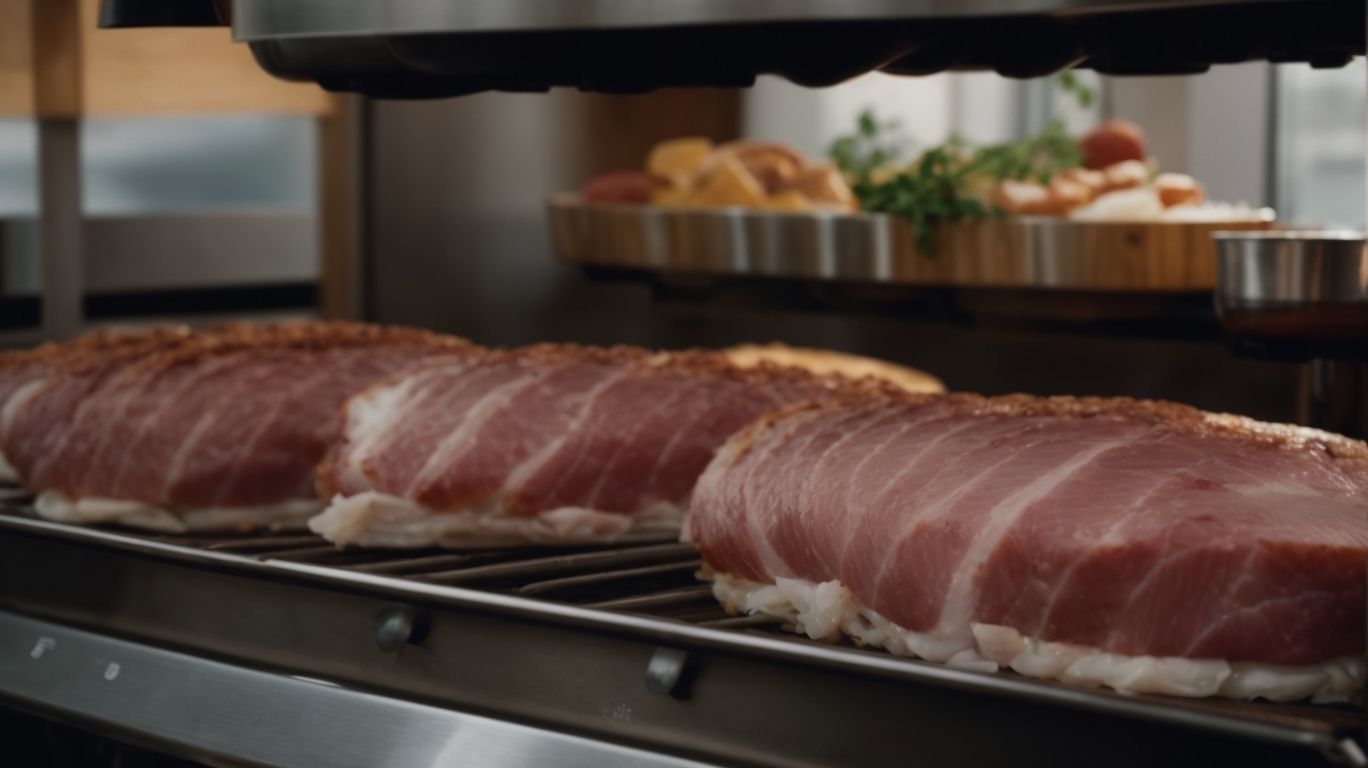
Credits: Poormet.Com – Joseph Robinson
Transitioning a boiled Gammon Joint to the oven for roasting is a culinary art form that involves careful glazing, precise temperature control, and a watchful eye for achieving ideal caramelization.
What Ingredients Do You Need?
For roasting a Gammon Joint, gather essentials like the pre-boiled joint, a decadent glaze such as a honey-mustard blend, and complementary elements like cinnamon or pineapple for a tantalizing feast.
To elevate the flavors of your oven-roasted Gammon Joint, consider utilizing premium quality glazes that can deeply penetrate the meat, imparting a rich sweetness with contrasting savory notes.
Experiment with glaze variations like maple syrup and brown sugar, or a cranberry-orange reduction for a festive touch. Enhancing the dish with fragrant herbs such as rosemary or thyme can add complexity while brightening the overall taste profile.
When serving, garnish the dish with fresh herbs, citrus zest, or caramelized fruits for a visually stunning presentation that will impress any festive gathering.
Step-by-Step Guide to Cooking a Gammon Joint in the Oven
Initiate the oven-roasting process by preheating the oven, delicately placing the boiled Gammon Joint on a roasting tray, generously applying the chosen glaze, and supervising the roasting until achieving an irresistible golden finish.
Once the Gammon Joint is in the oven, it’s time to set a timer and let the magic happen. Keep a keen eye on the joint to avoid overcooking, which can result in a dry and tough texture. Remember, the key here is low and slow cooking for that perfect succulence.
To enhance the flavors, consider basting the joint periodically with the pan juices or additional glaze. This not only infuses extra taste but also helps in keeping the meat moist throughout the cooking process.
Expert Tip: For a caramelized finish, turn up the heat or broil for the last few minutes of cooking, ensuring a mouthwatering presentation that will impress your guests.
Tips for Cooking the Perfect Gammon Joint
Achieving culinary excellence with Gammon Joints necessitates attention to detail, precision in cooking durations, meticulous oven temperature adjustments, and innovative glazing techniques for a mouthwatering masterpiece.
How Long Should You Boil a Gammon Joint?
Determining the ideal boiling duration for a Gammon Joint is a critical step in the culinary process, with guidelines suggesting around 20 minutes per pound for achieving delectable tenderness and flavor infusion.
It’s crucial to remember that the size of the Gammon Joint plays a significant role in the overall cooking time. For instance, a heavier joint will naturally require a longer boiling period to ensure that the meat is cooked through evenly.
On the other hand, a smaller joint may not need the full 20 minutes per pound and could result in overcooking if not monitored carefully. This balance between size and time is where culinary finesse truly shines, allowing chefs to master the art of meat preparation.”
What Temperature Should the Oven Be Set to?
Establishing the appropriate oven temperature for roasting Gammon Joints is fundamental to achieve culinary excellence, typically requiring preheating to moderate temperatures around 180°C (350°F) for optimal caramelization and flavor development.
While 180°C (350°F) provides a good starting point, depending on the size and thickness of the Gammon Joint, you might want to adjust the temperature for precise cooking. For thinner cuts, consider increasing the heat slightly to 190°C (375°F) to ensure a beautifully seared exterior while keeping the inside moist and tender. On the other hand, thicker joints may benefit from a lower initial temperature like 170°C (325°F) to allow for gradual cooking throughout without drying out. Mastering these nuances of oven heat levels is key to achieving that perfect balance of tenderness and caramelized crust.
How Do You Know When the Gammon Joint Is Cooked?
Assessing the readiness of a Gammon Joint involves monitoring internal temperatures with a reliable meat thermometer, ensuring that it reaches the desired doneness of 71°C (160°F) for safe and sumptuous dining experiences.
Aside from using a meat thermometer, visual cues play a key role in determining the doneness of a Gammon Joint. Look for the meat to have a beautiful golden-brown crust, indicating caramelization and flavor development. You can check the texture by inserting a fork; the meat should feel tender and easily yield to slight pressure, signaling that it is cooked to perfection. Combining temperature testing, visual indicators, and texture evaluations ensures that your Gammon Joint is cooked precisely to suit your palate.
What Are Some Flavoring Options for the Gammon Joint?
Elevate the taste profile of Gammon Joints with tantalizing flavoring options such as honey-mustard glaze, maple syrup infusions, or innovative blends of spices and herbs for a gourmet dining experience.
For a classic twist, consider a traditional fruit-based glaze with a mix of brown sugar, cloves, and orange zest to impart a sweet and tangy essence to the succulent meat. If you’re feeling adventurous, experiment with savory glazes like a balsamic reduction combined with rosemary and garlic for a sophisticated flavor profile that complements the rich Gammon beautifully.
To add a touch of freshness, garnish your Gammon Joints with a medley of fresh herbs such as thyme, parsley, and chives before serving. The vibrant colors and fragrant aromas will not only elevate the visual appeal of the dish but also enhance its overall taste.
Conclusion
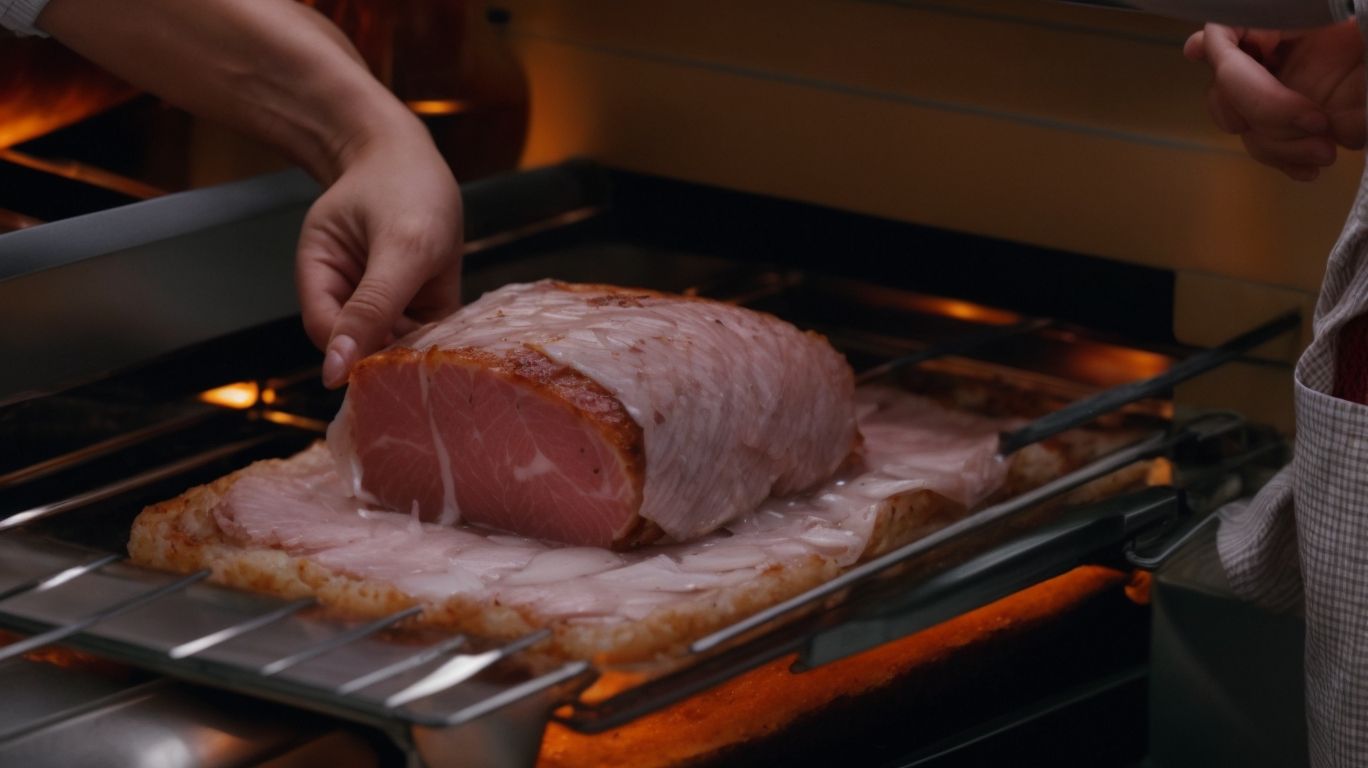
Credits: Poormet.Com – George Johnson
The journey of preparing and savoring a Gammon Joint embodies culinary artistry, sensory delights, and the joy of creating memorable dining experiences that celebrate the essence of exceptional home-cooked meals.
Whether you’re a seasoned chef or just starting your cooking adventures, the process of selecting, seasoning, and roasting a Gammon Joint is a labor of love that pays off in every succulent bite. The tender, juicy meat, infused with a subtle smoky flavor, is a hallmark of this traditional dish, offering a symphony of tastes and textures that captivate the palate. As you carve into the beautifully glazed joint, each slice unveils layers of flavor and craftsmanship, a testament to the culinary finesse involved.
Final Thoughts and Recommendations
As the culinary curtain descends on the exploration of Gammon Joints, let the aromas, flavors, and textures linger in your memory, inspiring future culinary creations and igniting a passion for crafting exceptional dishes that captivate the senses.
Let the tender succulence of the gammon joint be the canvas on which you paint a masterpiece of culinary artistry. Whether you opt for classic pairings like honey glaze and cloves or venture into more daring territories with a hint of pineapple or mustard, the versatility of this cut beckons creativity.
Engage your taste buds in a symphony of sweet and salty notes, as the richness of the gammon mingles with complementary flavors, beckoning memories of hearty family gatherings and festive feasts.
- Experiment with different cooking methods – from roasting and boiling to baking and glazing – to unlock an array of taste profiles that cater to varied palates.
- Explore regional spices and herbs to infuse your gammon joint with global influences, transporting your dining experience to far-flung culinary destinations.
Embrace the challenge of culinary alchemy as you transform a humble cut of meat into a gastronomic delight that garners praise and admiration. Allow the legacy of gammon joints to shape your culinary repertoire, guiding you towards new flavors, textures, and cooking techniques.
Frequently Asked Questions
1. What is a gammon joint and why is it important to boil it before cooking in the oven?
A gammon joint is a cut of pork that comes from the hind leg of the pig. Boiling it first helps to remove excess salt and make it more tender before finishing it off in the oven.
2. Can I skip the boiling step and just cook the gammon joint in the oven?
While it is possible to skip the boiling step, it is not recommended. Boiling helps to remove excess salt and ensure a tender and juicy gammon joint.
3. How long should I boil the gammon joint before cooking it in the oven?
The general rule of thumb is to boil the gammon joint for 20 minutes per pound before transferring it to the oven. However, the cooking time may vary depending on the size and thickness of your gammon joint.
4. Do I need to preheat the oven before cooking the gammon joint?
Yes, it is important to preheat the oven to the appropriate temperature before cooking the gammon joint. This will ensure that the gammon joint cooks evenly and thoroughly.
5. How do I know when the gammon joint is cooked?
The gammon joint is cooked when the internal temperature reaches 145°F (63°C). You can use a meat thermometer to check the temperature in the thickest part of the joint.
6. Can I add any seasonings or flavors to the gammon joint before cooking?
Yes, you can add herbs, spices, and other seasonings to enhance the flavor of the gammon joint. Just be sure to adjust the boiling and cooking time accordingly to avoid overcooking or undercooking.

